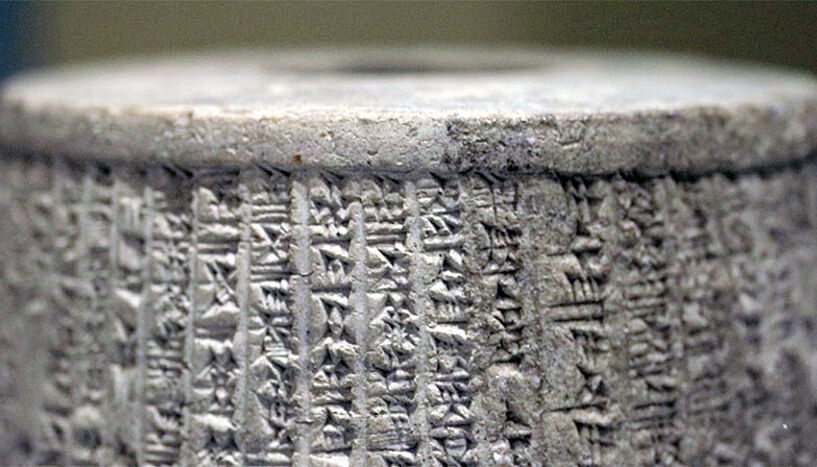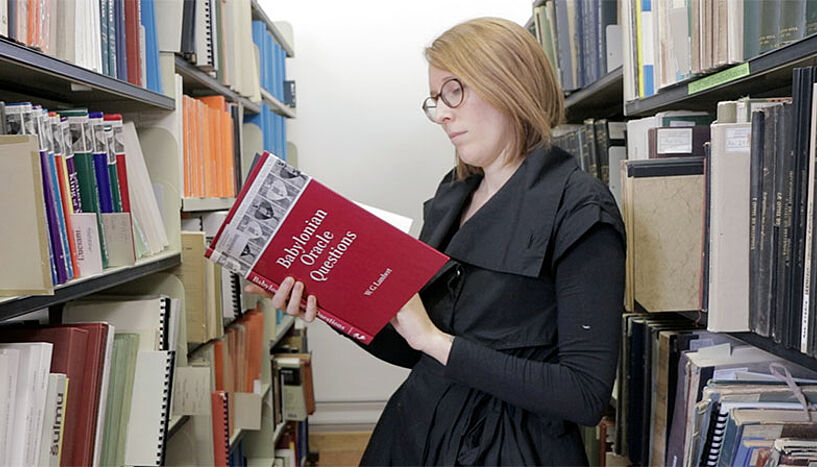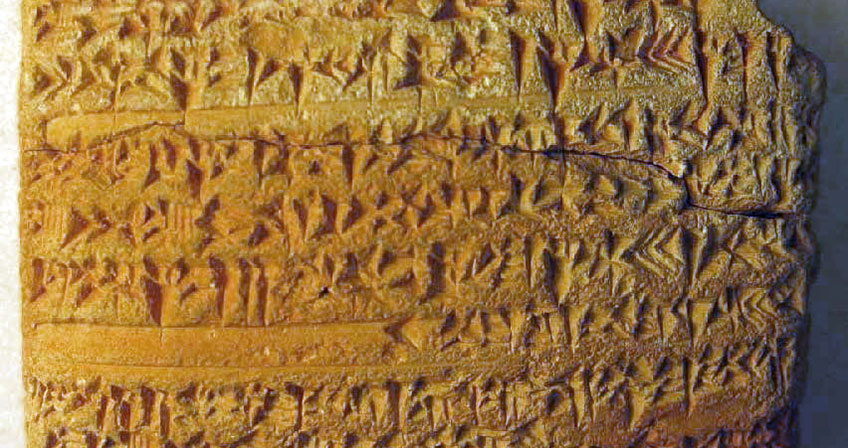The magic of Mesopotamia
| 07. März 2019Assyriologist and ERC Starting Grant investigator Nicla De Zorzi studies ancient Mesopotamian literature, magic and divination at the University of Vienna. In her research she aims at investigating analogical thinking as a dominant feature of ancient Mesopotamian scholarship.
In her ERC Starting Grant project, Nicla De Zorzi from the Department of Near Eastern Studies takes a look at three large textual corpora of ancient Mesopotamia in order to analyse a specifically Mesopotamian scholarly method in which analogical thinking plays a fundamental role. The three corpora are: literary source texts, magical texts such as anti-witchcraft incantations and rituals as well as divinatory texts connected with the practice of astrology and liver reading.
"My hypothesis is that the composition of these literary, magical and divinatory texts was strongly influenced by processes of analogical inference that manifest themselves in the widespread use of certain textual strategies and meaning-making devices, in particular repetitions and parallelisms," explains De Zorzi. The recently awarded ERC Starting Grant gives her the opportunity to investigate this idea on a large scale from a cross-genre perspective.
The historical background
The Assyriologist finds most of her sources at the British Museum in London, which holds the largest collection of ancient Mesopotamian clay tablets written in cuneiform script – the language used is Babylonian, a Semitic language like Arabic. "These tablets were produced and studied by scribes and scholars working under the auspices of powerful institutions, such as palaces and temples," explains De Zorzi, who will concentrate on texts dating back to the first millennium B.C.E.
De Zorzi's sources are ancient Mesopotamian clay tablets, written in cuneiform script, using Akkadian language (Babylonian). (© Nicla De Zorzi)
"One major problem that Assyriologists who wish to study these huge text corpora face is that there is no clear archaeological context for many of the tablets. Contexts have to be reconstructed on the basis of evidence inherent in the tablets."
Analogical world-view
In the ERC project REPAC (Repetition, Parallelism and Creativity), Nicla De Zorzi focuses on variant repetition, which is widespread in all three textual corpora she investigates. This includes the repetition of certain features, a word, a phrase, a syntactical structure, even a sound in a similar form soon after its first occurrence.
"Variant repetition is predicated on similarity, and for scholars of ancient Mesopotamian studies, words, concepts and things sharing an element of similarity were interconnected, in the sense that they were thought to be actually entangled with each other," the Italian researcher explains. "In ancient Mesopotamian magic, you can get a crying baby to calm down by rubbing it with an ointment that contains dust taken from a barrel because the word for 'crying' (hubūru) sounds like the word for 'barrel' (hubūru) in Babylonian."
The historical region of Mesopotamia was situated within the Tigris-Euphrates river system in Asia. Today it roughly corresponds with Iraq, Kuwait, parts of Northern Saudi Arabia, the eastern parts of Syria and Southeastern Turkey. (© University of Vienna)
A divinatory culture
In divination, for instance, the liver of a sacrificial sheep showing a groove resembling a crescent was thought to predict the city being surrounded by an enemy. The connection between the two is based on the similarity between the phenomenon and the predicted event. "For the Babylonians, this similarity reflects an actual interconnectedness between the two, which in turn reveals the will of the gods," the Assyriologist explains. "How this kind of world-view is reflected in the different textual corpora has never been investigated on a large scale and I am very keen to do so in my ERC project."
Repetition is repetition is repetition
Ancient Mesopotamian literature is full of variant repetitions. These phenomena have usually been regarded as mere poetic ornaments, as a matter of style. The project argues that textual repetition in literature is also rooted in the ancient Mesopotamian analogistic world-view. A typical parallelism that repeats a certain statement in different words adds nuances of meaning. By investigating such phenomena, the project will discover new layers of meaning even in well-known core texts of Babylonian literature. It will show for the first time that Babylonian poetics aimed to gain new insights into the state of the world through text construction guided by similarity and analogy.
"Silk Road epistemology"
Last but not least, Nicla De Zorzi wants to take an interdisciplinary approach by conducting two cross-cultural comparative case studies. One case study will compare the project's findings with the investigation of repetition and parallelism in the closely related corpus of biblical poetry.
"I am particularly excited about the second case study, in which we will compare a corpus of ancient Chinese literary and philosophical texts with our material", states De Zorzi. Dating back to roughly the same period, the ancient Chinese and Mesopotamian cultures are very similar in their socio-economic and political structures. Importantly, their systems of scribal erudition are comparable – the long tradition of writing-based scholarship, the non-alphabetic polyvalent script, the underlying analogistic world-view. Both construct meaning through analogism and parallelistic argumentation expressed by textual means. "It will be extremely exciting to investigate the similarities and differences in the way of thinking in these two great cultures of antiquity. Nothing like this has ever been attempted." (td)
Nicla De Zorzi, born in 1982 in Vittorio Veneto, Italy, studied classical philology, archaeology, history and Assyriology at the Caʼ Foscari University Venice and at the University of Vienna. Since 2014, she has been working as a postdoctoral researcher at the Department of Near Eastern Studies at the University of Vienna. In 2018, she received an ERC Starting Grant.
Nicla De Zorzi started her ERC Starting Grant project REPAC: Repetition, Parallelism and Creativity: An Inquiry into the Construction of Meaning in Ancient Mesopotamian Literature and Erudition Fact Sheet at the beginning of 2019 at the Department of Near Eastern Studies at the University of Vienna.







